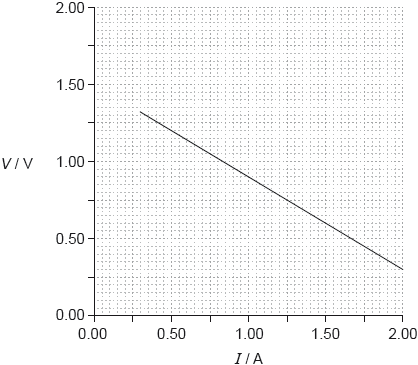| Date | May 2019 | Marks available | 2 | Reference code | 19M.2.HL.TZ2.4 |
| Level | Higher level | Paper | Paper 2 | Time zone | 2 |
| Command term | Calculate | Question number | 4 | Adapted from | N/A |
Question
Three identical light bulbs, X, Y and Z, each of resistance 4.0 Ω are connected to a cell of emf 12 V. The cell has negligible internal resistance.
When fully charged the space between the plates of the capacitor is filled with a dielectric with double the permittivity of a vacuum.
The switch S is initially open. Calculate the total power dissipated in the circuit.
The switch is now closed. State, without calculation, why the current in the cell will increase.
The switch is now closed. .
The cell is used to charge a parallel-plate capacitor in a vacuum. The fully charged capacitor is then connected to an ideal voltmeter.
The capacitance of the capacitor is 6.0 μF and the reading of the voltmeter is 12 V.
Calculate the energy stored in the capacitor.
Calculate the change in the energy stored in the capacitor.
Suggest, in terms of conservation of energy, the cause for the above change.
Markscheme
total resistance of circuit is 8.0 «Ω» ✔
«W» ✔
«a resistor is now connected in parallel» reducing the total resistance
OR
current through YZ unchanged and additional current flows through X ✔
evidence in calculation or statement that pd across Y/current in Y is the same as before ✔
so ratio is 1 ✔
«» ✔
ALTERNATIVE 1
capacitance doubles and voltage halves ✔
since energy halves ✔
so change is «–»2.2×10–4 «J» ✔
ALTERNATIVE 2
✔
capacitance doubles and charge unchanged so energy halves ✔
so change is «−»2.2 × 10−4 «J» ✔
it is the work done when inserting the dielectric into the capacitor ✔
Examiners report
Most candidates scored both marks. ECF was awarded for those who didn’t calculate the new resistance correctly. Candidates showing clearly that they were attempting to calculate the new total resistance helped examiners to award ECF marks.
Most recognised that this decreased the total resistance of the circuit. Answers scoring via the second alternative were rare as the statements were often far too vague.
Very few gained any credit for this at both levels. Most performed complicated calculations involving the total circuit and using 12V – they had not realised that the question refers to Y only.
Most answered this correctly.
By far the most common answer involved doubling the capacitance without considering the change in p.d. Almost all candidates who did this calculated a change in energy that scored 1 mark.
Very few scored on this question.


